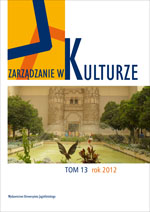Tematyka cygańska w polskich zbiorach ikonograficznych (wiek XIX – I połowa XX wieku) – rekonesans
The image of Gypsies in Polish collections of iconographic materials (19th century – first half of the 20th century) – reconnaissance
Author(s): Ewa Kocój, Paweł Lechowski, Katarzyna PlebańczykSubject(s): Cultural Essay, Political Essay, Societal Essay
Published by: Wydawnictwo Uniwersytetu Jagiellońskiego
Keywords: The Roma; Gypsy culture; iconography; Gypsy collection in Poland
Summary/Abstract: At least since the Middle Ages the people of Europe have shared their space with the nomadic Gypsy people. Its long, often troublesome neighborhood resulted in the formation of two parallel, though different, stereotypical images of the Roma in European culture. In one of them one, they are portrayed negatively, as the personification of all the pejorative and demonic qualities. Two words describing Roma Stereotypes in this language context are as follows: dangerous vagrants, thieves, criminals, living without any moral rules. Under the influence of romantic ideas in European culture a different picture of the Gypsies began to take shape. According to this ideal, they were considered to be free people, living itinerant lives and in harmony with nature, free from hard work, colorful, cheerful, independent and artistic. In this paper we would like to present how the ideas existing in the nineteenth-and twentieth century culture reflected in the iconography of Roma. On the basis of Polish collections we will show the most important themes and motifs associated with the iconography and mythology of this minority. At the same time, we will try to show to what extent the European images coincided with the real culture and tradition of the Gypsies. In the analysis we will use both engravings, woodcuts, paintings, graphics press and photographs found in public collections in Tarnow, Sejny or Krakow, as well as in various private collections
Journal: Zarządzanie w kulturze
- Issue Year: 13/2012
- Issue No: 2
- Page Range: 171-183
- Page Count: 13
- Language: Polish

